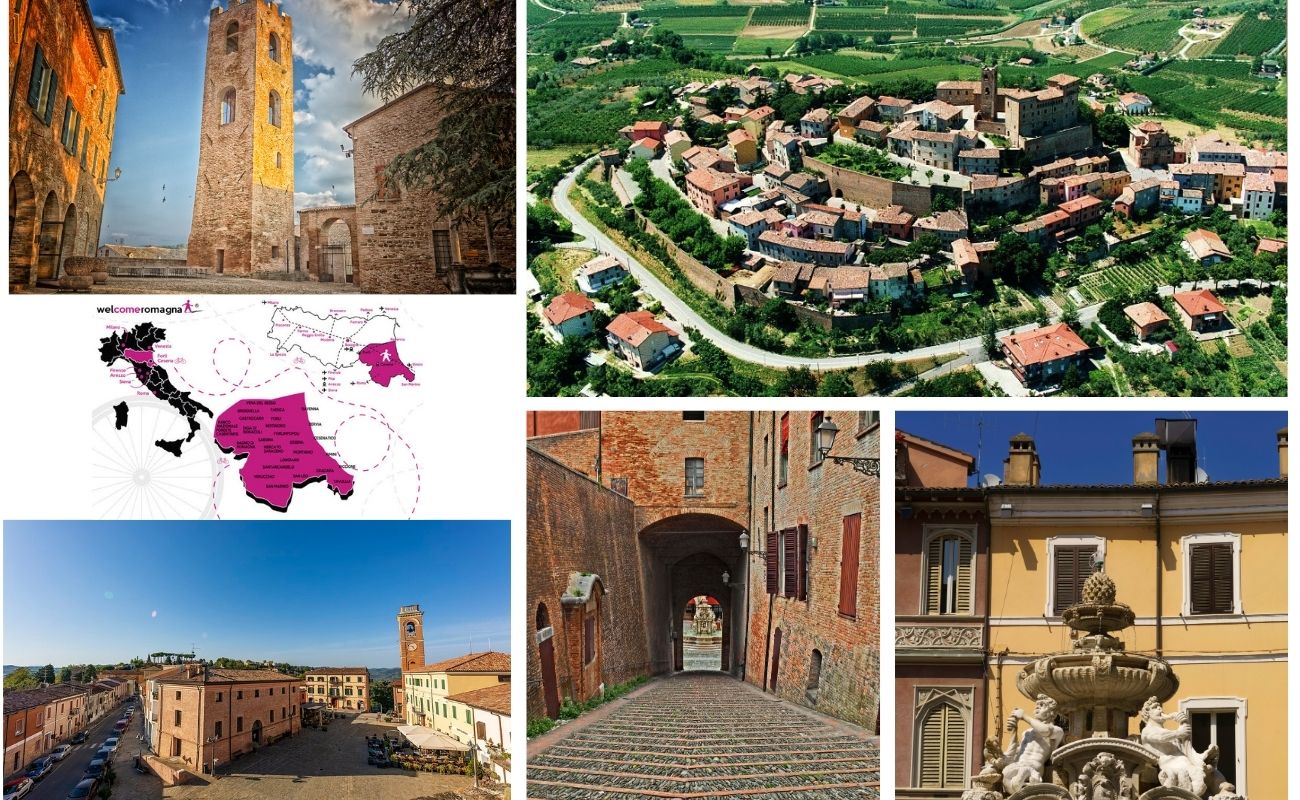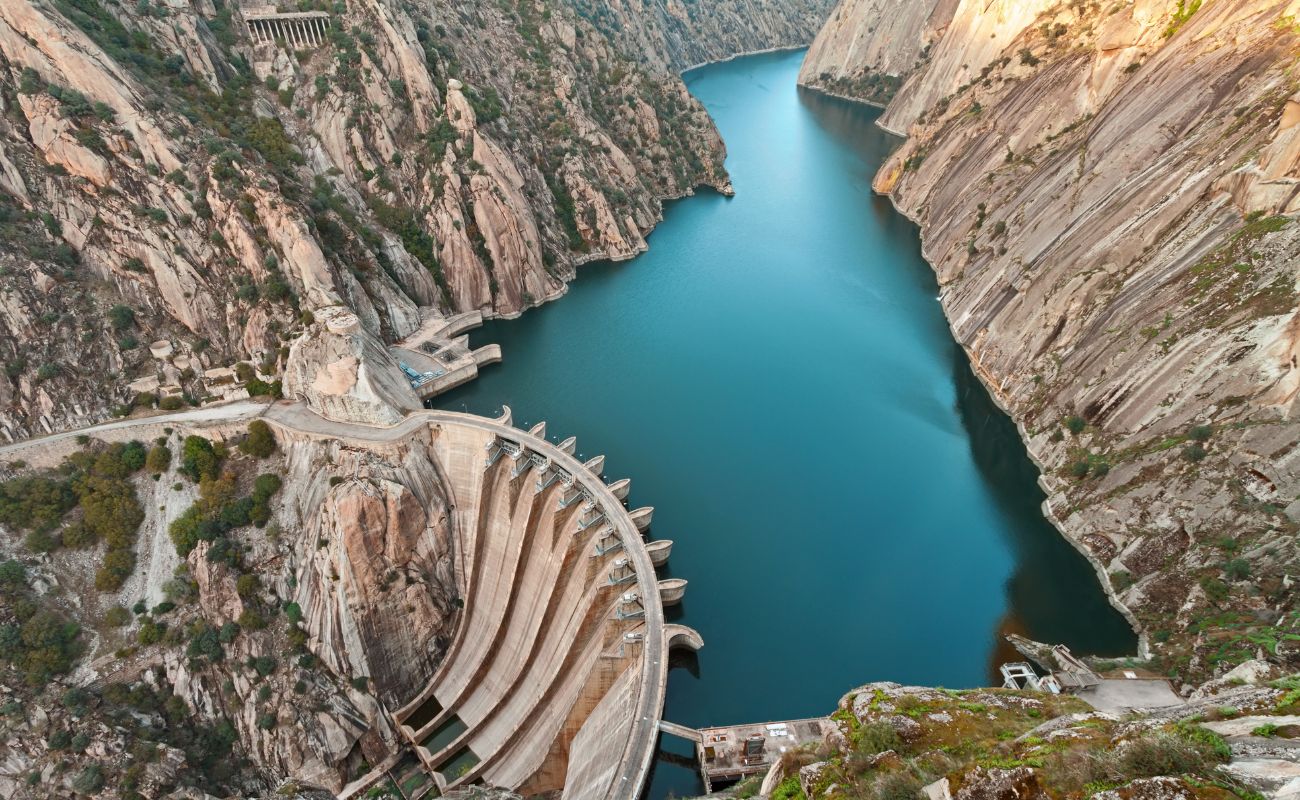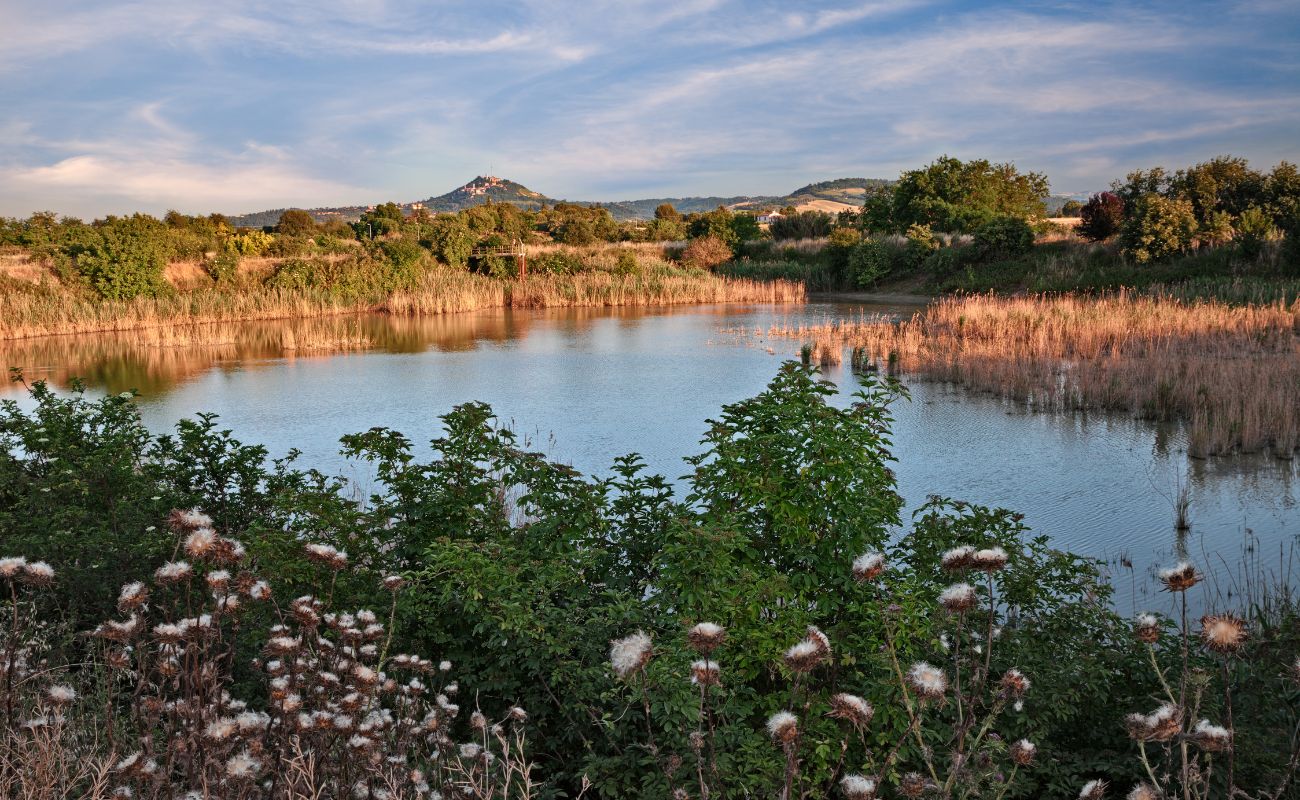
Itinerari Emilia-Romagna
Welcome to Bike Aparthotel Romea: your cycling retreat in Cesena, in the beautiful Romagna region!
Imagine a place where your passion for cycling perfectly merges with the comfort of a cozy aparthotel, transforming your vacation into an unforgettable cycling experience.
Located in the heart of Romagna, it is the ideal starting point to explore the breathtaking landscapes and scenic roads of the region. With the Welcomeromagna brand, we are proud to offer a program of excursions and services dedicated to cyclists, ensuring a tailor-made stay for your biking adventures.
Our spacious accommodations with fully furnished kitchenettes provide everything you need for a comfortable stay, including specialized services for cyclists such as secure bike storage, bike maintenance equipment, laundry facilities, dryers, and tips for the best cycling routes in the area.
After a day in the saddle, enjoy a delicious dinner or simply relax in your fully furnished accommodation. Our friendly and knowledgeable staff is at your disposal to provide all the information and assistance you need to make your stay unforgettable. Whether you are a professional cyclist looking for breathtaking challenges or a leisure cyclist seeking more relaxed adventures, at Aparthotel Bike Romea you will find everything you need for a cycling holiday.
Discover Romagna on your bike and let yourself be pampered at Bike Aparthotel Bike Romea. We are ready to welcome you and provide you with an unmatched cycling experience!
Explore the hidden treasures of this wonderful land through unique and exciting routes. Pedal through vineyards, medieval villages, and breathtaking landscapes, enjoying an unforgettable outdoor experience. Whether you are an experienced cyclist or a novice looking for new adventures, there is a tailored tour for you! Join us and let the beauty of Romagna on two wheels take you away.
Discover Romagna on your bike with Aparthotel Bike Romea and Welcomeromagna!
Tour proposals to discover Romagna starting from Cesena
Cesena
Cesena is a picturesque city located in Romagna. Known for its charming historic center, rich history, and vibrant cultural atmosphere, Cesena is an ideal destination for those seeking an authentic and evocative experience.
In addition to its historical and cultural attractions, Cesena also offers a lively gastronomic scene, with numerous restaurants and trattorias serving traditional Romagna dishes such as piadina and homemade pasta.
The heart of Cesena is its historic center, characterized by narrow cobbled streets, welcoming squares, and ancient palaces. Key attractions in Cesena include

Malatestiana Library
Malatestiana Library: Considered the first public library in Europe, it is a Renaissance architectural masterpiece housing an extensive collection of ancient manuscripts.
Malatestiana Fortress
Malatestiana Fortress: This imposing medieval fortress dominates the cityscape and has witnessed numerous historical events over the centuries. Today it hosts exhibitions and cultural events
Cathedral of San Giovanni Battista
Cathedral of San Giovanni Battista: Built in the 12th century, this cathedral features a Gothic façade and an interior richly decorated with artwork and frescoes.
Il Teatro Alessandro Bonci
Alessandro Bonci Theatre
La Piazza del Popolo
Piazza del Popolo: This elegant square is the pulsating heart of Cesena’s social life, surrounded by historic buildings, cafes, and shops. At its center stands the majestic Masini Fountain.
Savio River Route: Cesena, Mercato Saraceno, Sarsina, Bagno di Romagna
Percorsi naturalistici in collina
The route along the Savio River from Cesena to Bagno di Romagna via Mercato Saraceno and Sarsina offers an exciting journey through pristine nature, ancient history, and authentic Romagna culture. Here’s a tourist description of this captivating route:
This route along the Savio River is an extraordinary opportunity to immerse yourself in nature, explore the history and culture of Romagna, and enjoy a rejuvenating break in its thermal waters. Have a great trip!

Cesena
Starting in Cesena, a city rich in history and culture, you could explore its renowned Malatestiana Library, a UNESCO World Heritage Site, and admire the majestic Malatestiana Fortress dominating the historic center. Afterwards, you might begin your journey along the Savio River.
Sarsina
Continuing along the river, you will reach Sarsina, a city with a rich history dating back to Roman times. Here, you could visit the Archaeological Museum and the Roman Theater, as well as explore its captivating historic center and admire its impressive cathedral.
Mercato Saraceno
Continuing along the route, you will arrive in Mercato Saraceno, a charming medieval village located on the banks of the Savio River. Here, you could stroll through its cobbled streets, admire its ancient buildings, and visit its weekly market, where you might purchase local products and traditional crafts.
Bagno di Romagna
Finally, you will arrive in Bagno di Romagna, a renowned spa town surrounded by breathtaking landscapes. Here, you could relax in its thermal waters, hike in the surrounding forests of the Casentino Forests National Park, and taste its traditional Emilia-Romagna cuisine in one of its cozy restaurants.
Percorso del Savio: Cesena, Mercato Saraceno, Sarsina Bagno di Romagna
Diversi percorsi naturalistici
The tourist route from Cesena to Montiano and Longiano offers a fascinating experience through the hills of Romagna, allowing visitors to discover the natural beauty, history, and culture of the region.
Here is a description of this picturesque itinerary:
This tourist route offers a unique opportunity to explore the history, culture, and natural beauty of Emilia-Romagna, through enchanting medieval villages and breathtaking landscapes. Have a great journey!

Cesena
Begin your journey in Cesena, a city rich in history and culture. You might explore the majestic Malatestiana Fortress and the UNESCO World Heritage-listed Malatestiana Library. Then, head towards the surrounding hills to start the route to Montiano and Longiano.
Montiano
Begin your journey in Cesena, a city rich in history and culture. You might explore the majestic Malatestiana Fortress and the UNESCO World Heritage-listed Malatestiana Library. Then, head towards the surrounding hills to start the route to Montiano and Longiano.
Longiano
Continuing along the route, you will arrive in Longiano, another delightful medieval village nestled in the hills. Here, you could visit the picturesque Malatesta Castle, which houses the Aria d’Arte Foundation Museum, dedicated to contemporary art. You could also explore the historic center of Longiano, with its picturesque cobbled streets and charming squares.
Nature and Landscape
Along the route from Cesena to Montiano and Longiano, you could enjoy the natural beauty of the Romagna hills, with its vineyards, olive groves, and cultivated fields. Along the way, you might stop for a walk or a picnic immersed in nature.
Ridracoli Dam
Ridracoli Dam is a majestic hydraulic structure located in the stunning hills of the Romagna Apennines. Built between 1974 and 1982 on the Bidente River, the dam serves to regulate water flow, prevent flooding, and supply water to the surrounding region.
Beyond its practical function, Ridracoli Dam has become a popular tourist destination thanks to its scenic beauty and the numerous recreational activities it offers to visitors. The artificial lake created by the dam is surrounded by a breathtaking landscape of forests, mountains, and green meadows, making it an ideal spot for hiking, picnicking, and outdoor activities.
Numerous hiking trails wind around the lake, allowing visitors to explore the surrounding nature and enjoy stunning panoramic views. Water activities such as kayaking, canoeing, and fishing are also possible on the lake.
For those interested in learning more about the dam and its importance for the region’s water supply, the Ridracoli Visitor Center organizes interactive exhibitions and guided tours.
In summary, Ridracoli Dam is a must-visit for those wishing to immerse themselves in the pristine nature of the Romagna Apennines and enjoy an unforgettable outdoor experience.

The Magic of the Casentino Forest National Park

The Casentino Forests, Monte Falterona, and Campigna National Park is a natural treasure located in the regions of Tuscany and Emilia-Romagna, in the heart of Italy. Established in 1993, this national park is a protected area that encompasses a vast expanse of wild land, mountains, forests, and crystal-clear waterways.
Its natural beauty is astounding: from dense beech, chestnut, and fir woods to mountain peaks offering breathtaking views of the surrounding countryside. Among its most spectacular features are Monte Falterona, the source of the Arno River, and the Casentino Forest, one of Europe’s oldest forests, home to a rich variety of flora and fauna, including deer, wild boar, golden eagles, and Apennine wolves.
The park offers a myriad of activities for nature lovers and outdoor sports enthusiasts, including hiking, trekking, mountain biking, climbing, birdwatching, and horseback riding. Numerous well-marked hiking trails allow visitors to venture through the wilderness of the park, trekking through woods, alpine meadows, and mountain streams.
For those interested in deepening their knowledge of the park and its environmental and historical significance, guided tours, museums, and visitor centers provide detailed information about the flora, fauna, and culture of the region.
In summary, the Casentino Forest National Park is a haven for nature lovers and a sanctuary of tranquility for those wishing to escape the hustle and bustle of everyday life and immerse themselves in the pristine beauty of nature.
Via Artusiana: An Exciting and Intriguing Journey through Romagna in the Footsteps of Pellegrino Artusi
The “Via Artusiana on the trails of Pellegrino Artusi” is a gastronomic and cultural route that follows the footsteps of Pellegrino Artusi, considered the father of modern Italian cuisine. Artusi is famous for his cookbook “The Science of Cooking and the Art of Eating Well,” published in 1891, which helped to standardize and spread traditional Italian recipes across the country.
The Via Artusiana route passes through various towns and locations in central Italy, particularly in Romagna, where Artusi spent much of his life. Along the way, travelers can explore places connected to Artusi’s life and work, as well as taste dishes and products typical of the region. The route includes visits to cities such as Forlimpopoli, where Casa Artusi is located, a museum dedicated to the life and works of Pellegrino Artusi, and a center of culinary excellence that organizes cooking courses and events related to Italian gastronomic tradition.
In addition to cultural visits, the Via Artusiana also offers a unique opportunity to taste traditional Italian dishes, with tastings of local specialties prepared according to Artusi’s recipes and served in restaurants and trattorias along the route.
In summary, the Via Artusiana is a fascinating and tasty journey through the history and culinary culture of Italy, allowing travelers to discover the roots of modern Italian cuisine and taste authentic flavors.

Rocche and Castles in Romagna
History, rocche e castles
Romagna is a region rich in history and cultural heritage, and its rocche (fortresses) and castles are evocative testimonies of its glorious past. Here is an overview of the main fortresses and castles you can visit in Romagna.
These are just a few examples of the numerous fortresses and castles that dot the landscape of Romagna. Each has its fascinating history to tell and offers a unique experience to visitors who wish to immerse themselves in the history and culture of the region.

Rocca di San Leo
Rocca di San Leo: Situated on a limestone cliff, the Rocca di San Leo dominates the surrounding landscape with its grandeur. It was a strategic fortress in the Middle Ages and was also used as a prison for Count Cagliostro. Today, visitors can tour its towers, prisons, and the museum dedicated to Cagliostro.
Rocca Malatestiana di Cesena
Malatestiana Fortress of Cesena: Built in the 13th century by the Malatesta family, this fortress stands majestically in the heart of Cesena. It houses the Archaeological Museum and an ancient library with a vast collection of medieval manuscripts.
Castello di Gradara
Castello di Gradara: Immortalized by Dante in the Divine Comedy, the Castello di Gradara is one of the most beautiful and best-preserved in Italy. It is located on a hill and offers a breathtaking view of the Adriatic Sea. It is famous for the legend of Paolo and Francesca.
Rocca di Montefiore Conca
Rocca di Montefiore Conca: Situated on a panoramic hill, this fortress dominates the surrounding landscape. Dating back to the 10th century, it has been expanded in subsequent centuries. It offers a spectacular view of the surrounding countryside and hosts cultural events throughout the year.
Castello di Santarcangelo di Romagna
Castello di Santarcangelo di Romagna: This medieval castle is located in the historic center of Santarcangelo di Romagna. Its origins date back to the 13th century, and it offers a charming atmosphere with its towers and walls.
Cervia and its Salt Pans
Cervia is a picturesque seaside town located along the Adriatic coast. Known for its golden beaches, crystal-clear waters, and historic charm, Cervia is an ideal destination for those seeking a relaxing and culturally rich vacation.
One of the most iconic attractions of Cervia are its salt pans, which date back to ancient times and are still in operation today. The Cervia salt pans form a unique and fascinating ecosystem, characterized by brackish lagoons, navigable canals, and evaporation ponds. This particular environment provides an ideal home for a variety of flora and fauna, including numerous species of migratory birds.
Visitors can explore the salt pans through hiking trails and guided tours, learning about the salt production process and discovering the history and culture of Cervia’s salt pans. Boat trips through the lagoons are also possible, offering a unique perspective on the surrounding environment.
Besides the salt pans, Cervia also offers a range of other attractions, including its charming historic center with its narrow cobbled streets, picturesque canals, and the majestic Torre San Michele, which provides panoramic views over the town and the sea.
In summary, Cervia and its salt pans offer a unique combination of natural beauty, history, and culture, making it a must-visit destination for those traveling to Romagna.

Santarcangelo di Romagna

Santarcangelo di Romagna is an enchanting medieval village located in the hinterland of Romagna, in the province of Rimini. Known for its historic charm, picturesque cobbled streets, and fascinating architecture, Santarcangelo di Romagna is an ideal destination for those seeking an authentic and evocative experience.
The historic center of Santarcangelo di Romagna is dominated by the majestic Rocca Malatestiana, a medieval fortress that offers spectacular views over the town and surrounding hills. The narrow cobbled streets of the historic center are dotted with charming artisan shops, restaurants, and cafes, inviting visitors to stroll and immerse themselves in the enchanting atmosphere of the village.
Among the main attractions of Santarcangelo di Romagna is also the Grotta della Tanaccia, a natural cave that extends for about 800 meters beneath the historic center of the town. This cave offers a unique and evocative experience for those interested in exploring the geological history of the region.
Furthermore, Santarcangelo di Romagna hosts numerous cultural events and festivals throughout the year, including the famous “Santarcangelo dei Teatri,” an international theater and performance festival that attracts artists and spectators from around the world.
Rimini
Rimini is a vibrant coastal city located along the Adriatic Riviera. Known for its golden beaches, lively nightlife, and rich history, Rimini is a popular destination for tourists from all over the world. But beyond its beach attractions, Rimini is also famed for being the birthplace of the legendary director Federico Fellini.
Rimini boasts a long and illustrious history that dates back to Roman times, as evidenced by its impressive ancient monuments, including the Arch of Augustus and the Tiberius Bridge. The historic center of the city is a fascinating maze of narrow cobbled streets, welcoming squares, and ancient buildings, offering a unique and captivating atmosphere.
In addition to its natural beauty and history, Rimini is also celebrated for being the hometown of Federico Fellini, one of the greatest Italian film directors of all time.
The director is widely regarded as a global cinema icon and has left an indelible mark on culture and film art.
Rimini is home to the Fellini Museum, dedicated to the life and works of the director, providing visitors with a unique opportunity to delve into Fellini’s fantastical and visionary world.

Proposte tour alla scoperta della Romagna con partenza da Ravenna
Ravenna
Ravenna is a city rich in history, art, and culture. Famous for its extraordinary Byzantine mosaics, Ravenna has been declared a UNESCO World Heritage Site for its exceptional collection of historical and artistic monuments.
The heart of Ravenna is its historic center, characterized by narrow cobbled streets, lively squares, and magnificent medieval churches. Among the main attractions in Ravenna are.
In addition to its historic monuments, Ravenna also offers a vibrant cultural scene, with museums, art galleries, shops, and restaurants that reflect its rich artistic and culinary tradition.

Basilica di San Vitale
Basilica of San Vitale: This 6th-century basilica is one of the most important examples of Byzantine architecture in Italy. Inside, you’ll find spectacular mosaics that depict biblical and imperial stories.
Mausoleo di Galla Placidia
Mausoleum of Galla Placidia: This 5th-century mausoleum is known for its mosaics, which adorn the walls and ceiling with intricate patterns and vibrant colors.
Battistero degli Ariani
Baptistery of the Arians: Built in the 5th century, this baptistery is famous for its mosaics, including the renowned “Baptism of Christ.”
Basilica di Sant’Apollinare Nuovo
Basilica of Sant’Apollinare Nuovo: Constructed in the 6th century, this basilica features a series of mosaics that narrate stories from the Old and New Testaments.
Mausoleo di Teodorico
Mausoleum of Theodoric: This 6th-century mausoleum is an extraordinary example of Ostrogothic architecture, with an imposing circular structure.





